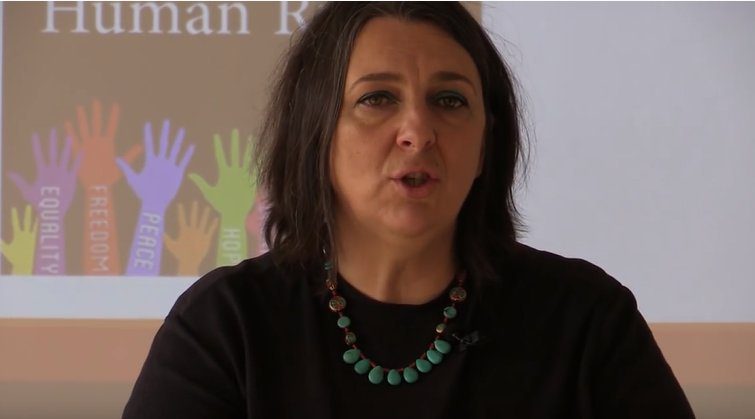
Wellbeing is Outcome – by Trish O’Hara March 2015
So the opening chapter of The Care Act is all about wellbeing. I presume every agency has wellbeing in their mission statement. We talk about wellbeing all the time in services today. It is the main driver of our delivery. It is how we are measured. It is the point. And yet, in my experience, practitioners struggle to define it.
Let’s be honest, care packages are created on the back of need, not want. Budgets mean that only ‘need’ is eligible. Any social worker who thinks their assessment processes are person centred must accept that their assessment processes are purely needs led. Person centred planning is aspirational and dreams led – it’s about want not need. What is important for the person is often in direct conflict to what is important to them. Whilst a person’s care package is based on need – the service providing said package is then measured on outcome. This means the provider must know how to move on from the initial assessment and turn the process on its head – still making sure that the person is in receipt of the service they are paying for.
This is not easy.
In essence, the budget meets the persons needs – but your service will be measured on the persons wellbeing and outcome.
So let us define outcome focused practice;
Input The resources required to provide agreed service
Activity The action plan that delivers said service
Output The service is evidenced as delivered
Outcome How this makes the person feel
An example to help us as follows;
Colin is a man with Down Syndrome and a mild to moderate learning disability. Colin has had a life long dream of meeting Elvis in Vegas. Colin lives with 5 others in a registered care home. Colin has the capacity to make his own decisions in the main and chooses to eat very surgery and fatty foods. Colin has diabetes and is about 5 stone overweight which is putting a great strain on his heart and effecting mobility. Colin often refuses his medication and has uncontrolled epilepsy with several seizures per day. Colin is very gregarious and friendly, often singing Elvis songs and making people around him feel good. The staff at his care service have spent years attempting to support Colin to make ‘better’ decisions about his diet and medication. He ignores them. Colins mum is very involved in his care and is worried about his health.
It is when Colin begins a person centred plan – using PATH that his life changes.
Starting with the dream – Colin is in Vegas meeting ‘an’ Elvis.
Colin has a hotel room and a ticket to an Elvis concert
Colin is on the plane with a ticket, passport and visa
Colin has saved £3500
Colin has permission from his GP and insurance to fly
We can see there are a myriad of barriers to this trip. We can see that there a many risks.
Colin tells the staff his dream – staff work from the dream to support Colin to take control over his life.
Colin is excited about going to Vegas. Colin takes his medication without fail and even agrees to a blood test. Colin actively involves himself in healthy eating and manages to lose 3 stone. Colin chooses to walk from the bus the final mile to the day service every day – this was his idea. Colin no longer drinks fizzy drinks. Colin is offered money from his mum and his uncle toward the trip. Colin saves and budgets toward his trip. Colin goes to see Elvis impersonators in the UK. The GP agrees that Colin is now fit to fly. Colin flies to Manchester to see family who he had lost touch with and to see how flying felt. Colin gets a passport.
Let’s use the language to describe events.
Input: Staff time – Actions plan creations – Appointments with health professionals
Action: Nutrition Plan, Exercise Plan, Budget/Savings Plan. Colin begins to shop, cook and eat according to plans – along with medical appointments, taking of his medication – controlling his epilepsy and blood sugars.
Output: Colin goes on his dream trip to meet an Elvis in Vegas
Outcome: Colin has outcome long before output – Colin takes control of his health, his diet, his life. Colin loses weight, becomes more active, controls his seizures and enjoysa full active life in his community. Colin makes plans, budgets and makes decisions.
It is often presumed that outcome comes after output, but as you can see by this example, often outcome arrives before output. In fact, Colin may never get to Vegas, (although I jolly well hope he does) – but still the outcome comes pouring in.
Staff have been working on Colins health and diet for years – but never before had Colin engaged in it. Colin needed to be heard. Colin wanted a trip to Vegas to meet Elvis, which was seen as impossible – Evidently, people believing in Colins dream and supporting him to work toward it – meant that he felt in control, empowered and made his own great steps to achieve his dream. The outcome is clearly filled with evidence of wellbeing.
It is this example that helps us think about what we measure. Output is not where we stop and is not what we measure. Wellbeing is outcome – and it is wellbeing that must be documented as evidence that we are providing the services that the person is paying for – Not need.
Share Us

